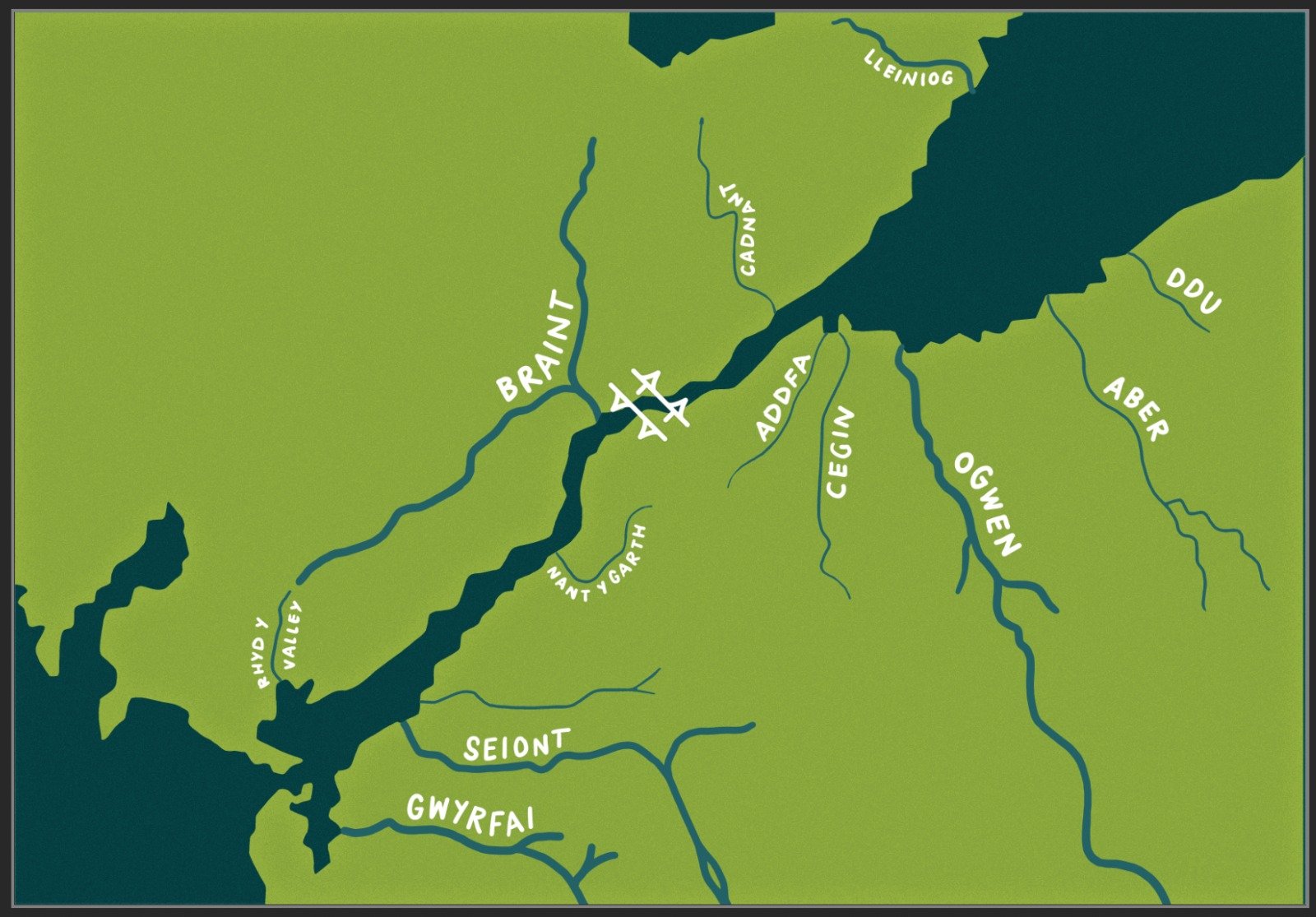Protect What You Love.
Potential Risks Facing The Menai Strait
The Menai Strait supports a wide variety of businesses, recreation activities, aquaculture and wildlife. We all want the Menai to remain sustainable well into the future. Post Brexit, with many changes affecting our ability to trade, relaxing of water quality rules, new farming legislation and an increase in urbanisation. These all lead to an uncertain future for the Strait. We have highlighted below potential risk factors to the future health of the Menai Strait. Join the forum, lets discuss solutions and build a stronger future for the Strait.
Together we can make a significant impact on the protection of this unique marine environment.
Rivers: Vectors of pollution
Thirteen rivers drain in to the Menai Strait. Nine from the mainland and four from Ynys Mon. Rivers act as vectors in to the Menai Strait bringing both much needed nutrients but also toxic pollution. Research shows that just 1% of global rivers are causing 80% of ocean pollution.
In 2021 the total number of CSO releases into the Menai Strait was 4913 for a total of 42,631 hours. CSO is untreated raw sewage and can wreak havoc on marine and freshwater ecosystems.
Plight of the Mussels
An industry on the brink of collapse
Pre Brexit Menai Strait Mussel farmers were one of the largest aqua culture producers in the U.K. Exporting 10,000 - 5,000 tonnes of mussels per year to the EU, but now exports have fallen to as little as 400 tonnes a year.
With fewer exports the industry has dwindled causing job loss and the decline of a historic industry in North Wales, stretching back generations.
Climate Change
The impacts of a changing climate will be felt first — and most dramatically — through our rivers and water resources. There is the potential for disaster at both ends of the scale: predictions suggest than the frequency and severity of both flooding and droughts will increase as our climate continues to heat up and weather patterns change.
With 13 rivers draining in to the narrow Strait, the Menai is at risk of both erosion and flooding.
Agriculture
The majority of land use around the Strait and the surrounding rivers is used for cattle and sheep farming.
Post Brexit our farmers are required to expand in order to feed the growing populations. To aid them the government have approved previously banned chemicals.
It is these chemicals being lost into the water course that will potentially have a devastating impact on wildlife in the Strait and the rivers surrounding it.
Forever Chemicals
PFAS are a family of thousands of human-made substances – nicknamed “forever chemicals” because they do not break down in the environment – that have been widely used since the 1940s in a huge range of everyday consumer products and industrial processes.
PFAS “behave like surfactants, like soaps”, says Prof Crispin Halsall, an environmental chemist at Lancaster University. “They sit at the interfaces between water and particles, water and biota, they can transfer to the atmosphere and they’re so abundant they cycle around the wider environment.”
Litter
Plastic has thousands of uses, its versatility and virtual indestructability practically unmatched in the world of synthetic materials.
Since first developing plastic in 1907, we have melded and moulded the material to fulfil our needs and desires. From bags and milk bottles to agriculture and transportation, plastic is everywhere, useful and convenient.
It isn't just large pieces that pose a threat, however - microplastics are in colossal quantities, sometimes in parts of the ocean that have never been seen by humans before.
Invasive Species
A perfect storm of international trade, human carelessness and climate change are bringing new species to the UK that can out-compete native flora and fauna. These factors endanger biodiversity and risk changing forever Britain’s countryside, forests, skies and waterways.







